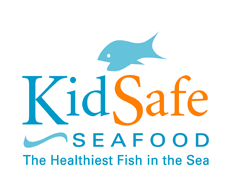 |
|
 |
|
Frequently Asked Questions
Isn't seafood healthier than anything else kids eat?
Seafood is one of the most nutritious protein sources, and the best source of omega-3s. But some fish are healthier than others. Young children are especially sensitive to the effects of seafood contaminants, since their nervous systems are still developing. Parents should not have to take this risk, especially when a variety of delicious, nutritious, low-contaminant seafood options are available.
Don't the benefits of omega-3s cancel out the risks of toxic contaminants?
Where children are concerned, research just hasn't been done yet to answer this question. Seafood can and should be a win-win for kids, rather than a calculation between risks and benefits.
Don't other foods contain these same toxic contaminants? Why single out seafood?
While mercury is a problem unique to seafood, PCBs are found in all animal products, in varying amounts according to fat content, their diets, and other factors. While it is difficult to avoid PCBs in other animal-protein sources, we have a unique opportunity with seafood to select the types that have low to no PCBs. The fewer PCBs kids ingest, the better.
Do KidSafe Seafood options have zero contaminants?
Unfortunately, virtually all seafood contains at least trace amounts of contaminants. But KidSafe Seafoods contain low levels that are considered acceptable for children 3 and older to eat once a week, according to the U.S. EPA's guidelines for fish consumption advisories.
What fish are considered safe for adults to consume, but not for children?
Body weight is a major factor in determining the level of contaminants that can be safely consumed. Because children have smaller bodies than adults, many fish that can be safely consumed on a weekly basis by adults should be eaten by children less frequently. These include blue fin, yellow fin, and albacore tunas; English sole, halibut, red snapper, and sablefish.
How much seafood should kids eat?
There is currently no one standard guideline. The Institute of Medicine study, released in October 2006, states that children, 12 years and under, "may benefit from consuming seafood, especially those with relatively higher concentrations of EPA and DHA [two types of omega-3s]." The report states that a "reasonable intake" would be two "age-appropriate servings" per week, without providing clear guidance on the size of the portions.
The American Heart Association recommends twice a week, while the American Academy of Pediatricians and the USDA Dietary Guidelines are less specific—recommending that children eat a variety of lean sources of protein, including seafood.
Isn't seafood hard to cook and tough to get picky kids to eat?
The good news for busy parents is that most fish and shellfish are fast and easy to prepare. Fish can be broiled, baked, grilled, or sautéed in fewer than 10 minutes, and most require only minimal seasoning or garnishing. KidSafe Seafood offers several easy to prepare, kid-tested recipes from well-known chefs (who are also busy parents) to make the job of putting delicious seafood on the table as easy as possible.
What about other popular seafood items for kids?
Frozen fish sticks: Most fish sticks are made from Pacific pollock, which has been certified by the Marine Stewardship Council (MSC) as a great choice from an environmental standpoint. Pollock also has low levels of mercury. However, PCB data for pollock indicates that young children (age 3-6) can eat this fish up to three times per month, which is just below the KidSafe Seafood cut-off (4.35 meals per month).
Additionally, many types of packaged fish sticks, often breaded and fried, contain unhealthy fats. For kids who like fish sticks, we encourage parents try to making their own using an easy baked fish stick recipe developed by Gourmet Magazine's executive chef, Sara Moulton.
Tuna: The safety of tuna is hotly debated. In particular, scientific data on the mercury content of canned tuna is incomplete and conflicting. Most yellow fin, albacore, and blue fin tunas are not the best choices for kids because they contain moderate to high levels of mercury. "Chunk light" tuna is believed to be made primarily from skipjack, a species of tuna that is lower in mercury; but some cans contain yellow fin tuna, which is higher in mercury. These are sometimes, but not always, labeled "gourmet" or "tonno.” Refer to the "What About Other Kinds of Fish" chart to see how the various types of tuna compare
Which fish are the highest in omega-3s?
All fish have them; some have more than others. Of all possible sources, fatty fish contain the highest amount of omega-3s. As fatty fish can also be those highest in contaminants, it is important to make careful choices for children. Wild Alaska salmon is particularly high in omega-3s.
Why are some fish more contaminated than others?
How safe a fish is depends on many factors: What it eats. How long it lives. Where it lives. How fatty it is. Fish that are mostly vegetarians are generally lower in contaminants than those that are carnivores. Fish that live just a couple of years tend to have lower contaminants than longer lived ones.
What about allergies and food poisoning?
As some young children (generally 0-3) develop shellfish allergies, many pediatricians recommend waiting until age 3 to introduce shellfish, though guidelines vary. Also shellfish should be properly cooked to prevent food poisoning.
Home - Site Map - Privacy Policy - Donate - SeaWeb - Contact Us
© 2011 KidSafe Seafood